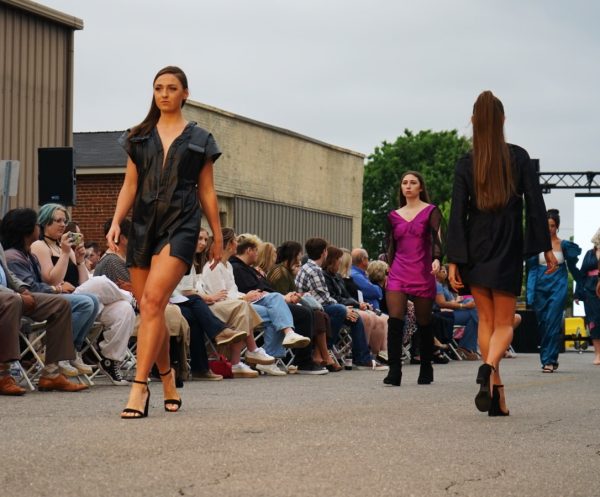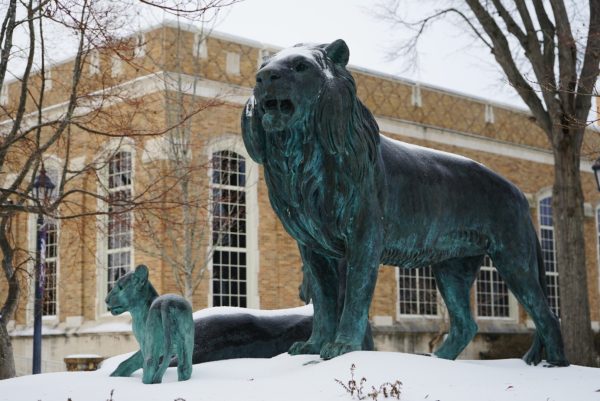The Renaissance Faire returns to Florence
November 18, 2021
Once every October, Florence’s Wilson Park morphs into the medieval kingdom of Fountain-on-the-Green. From belly dancers, to living statues, to royalty, Fountain-on-the-Green has it all. Its time period spans from the 1300s to the 1600s. Vendors with various trinkets and creations line the walkways of the park. Demonstrations are anywhere you turn. Lively songs ring around the fountain. The fourth weekend of October reigns in Florence’s annual Renaissance Faire. The Faire has been a constant in Florence for thirty-five years, but this past year’s battle with COVID-19 caused it to disappear for the entirety of 2020. This year, it made its grand return and didn’t disappoint.
The Faire began in July of 1987, with only three months’ worth of planning. It was a small event, very different from the grandiose that is now seen, and was only attended by a few hundred people. It was created by Billy Warren, a Florence educator and curriculum director, who has a deep passion for history and for Florence itself. He still works with the Faire and often goes as a monk, but was unable to attend this year, due to COVID-related concerns.
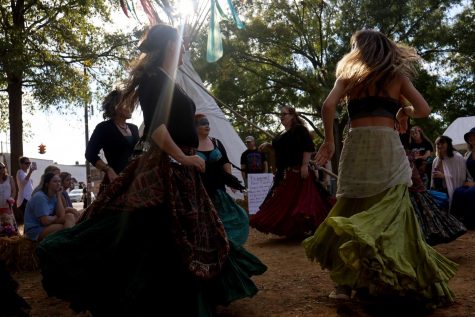
The Faire was established as an educational faire for children, but quickly became a favorite of adults, too. Children’s activities are still held at the Faire and at Florence-Lauderdale Public Library, across the street from the festivities. The Faire is a facet of events compiled by the Roundtable. The entire month of October is littered with Renaissance-related events. A costume workshop, medieval/Renaissance-related lectures and arts contests are all events that are a part of Renaissance month. The original Roundtable consisted of educators, leaders of nonprofits, UNA staff and local fans. The Roundtable is still active with the rebirth of the Faire, making it one of the only volunteer-run Faires in the United States. Their hard work and dedication is solely because they enjoy what they do and love seeing others enjoy it.
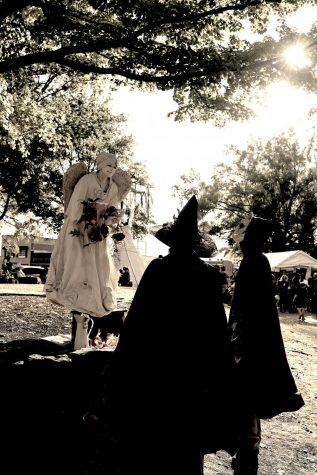
The current monarch for the Renaissance Faire is Queen Serene de Renald, also known as the Rat Queen. Due to COVID-19, her reign has been extended an extra year. Queen Serene is portrayed by Debbie Martin. The character is the third adopted daughter of a “Lord” and “Lady,” though the titles were simply a ruse. She earned the name “the Rat Queen” by creating an army of rats to commit various thefts — her consort is even a rat named Jerry.
Martin herself stumbled upon the Faire by accident some twenty-two years ago. When the previous “Lady of the Layout” (manager of the fairgrounds) retired, she jumped on the chance to be a bigger part of the Faire. It is a lot of work, but it isn’t something she has ever considered ceasing to do. The Faire means a lot to her, as it is something she loves and enjoys deeply. She loves sharing the hard work she has put into the Faire. Even when she doesn’t have to, she enjoys checking up on the vendors in her care.
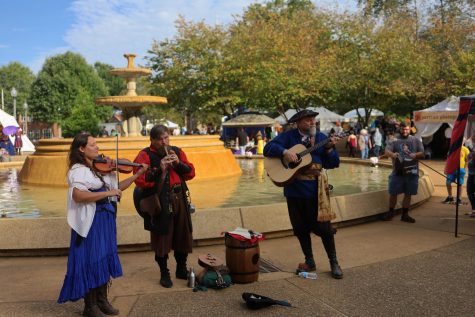
“The first Faire I found, I found by accident,” Martin said. “I walked around with a friend of mine and we fell in love with it. Later, we came down for the Faire and we came down on the wrong weekend and arrived at the feast, which was wonderful.”
Every new monarch is chosen by chance. At the annual feast, held a week before the Faire, prospective monarchs draw randomly with pastries. A token is baked into a dessert and whoever is the lucky recipient becomes the next king or queen. They are coronated on the second day of the Faire. Anyone interested in being monarch has to be at least eighteen and follow set rules for their persona. Most Renaissance Faires follow a certain monarchy, (Henry VIII, Elizabeth I, etc.) but Alabama’s Faire uniquely creates new personas for every new reign. The people of the Faire claim that their monarchy is cursed, therefore, they must alternate yearly.
Carol Burhans served as reigning queen in 2001, though now she has retired as Duchess. Her persona was the fictional daughter of King Arthur and the Lady of the Lake. She still works with the Faire, reviewing the layout plans made and giving information to guests at the Faire itself. She gives helpful insight and guides guests around, adding to the welcoming feel of the Faire. It truly goes to show how much these people care about the Faire when they have stayed with it so long.
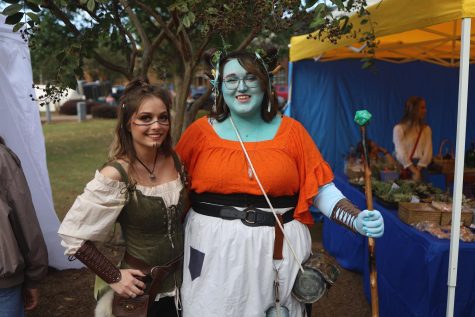
Another face behind the scenes is William Freeman, also known as Sir William of Lincolnshire. Sir William serves as the herald and steward to the queen, meaning he looks after the queen and makes announcements on her behalf. Each new monarch is a new and interesting experience for Sir William. Freeman has been volunteering with the Faire for thirty years and encourages new people to arrive. His passion for what he does has not faded in the years he has been with the Faire. He clearly loves what he does, and it reflects in the job he does.
“[The Faire] means a chance to play,” Freeman said. “We’ve been out for two years. COVID has killed two years of life for many people. You get into garb like this, and you just get to play. You can forget life for a couple of hours or the entire weekend.”
The Faire isn’t strictly for historical reenactments, either. People often show up in cosplay, dressing as their favorite characters. The Faire opens up chances for people to express themselves in ways they can’t in day-to-day life. For thirty-five years, it has given people a way to be themselves for one weekend of the year. If the people of the Faire have anything to do with it, it will continue to be that way for years to come.
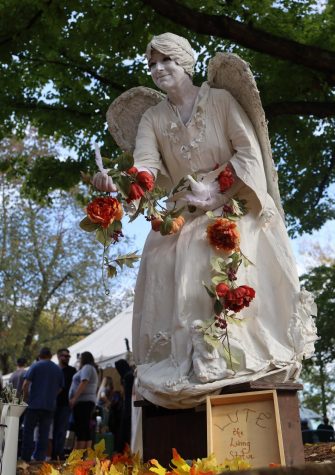


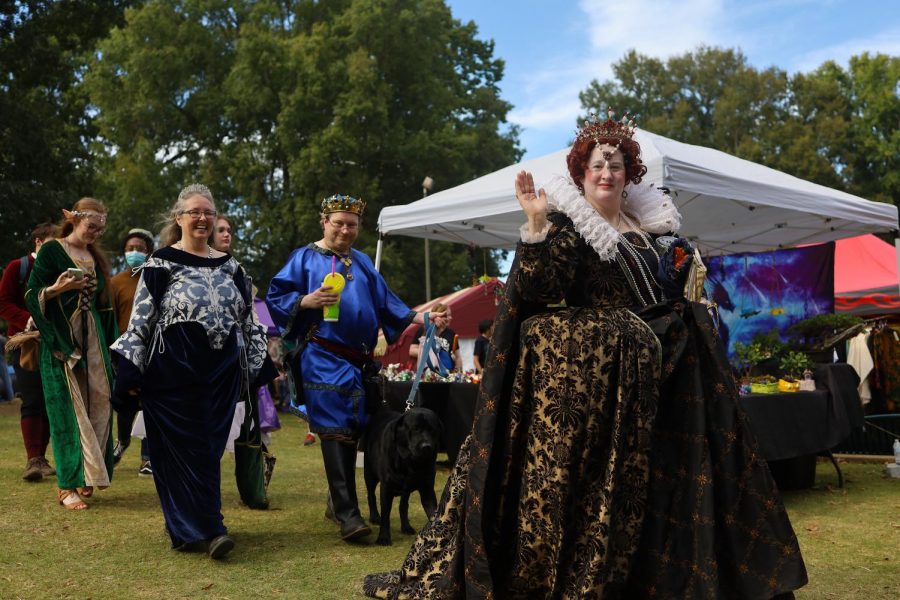
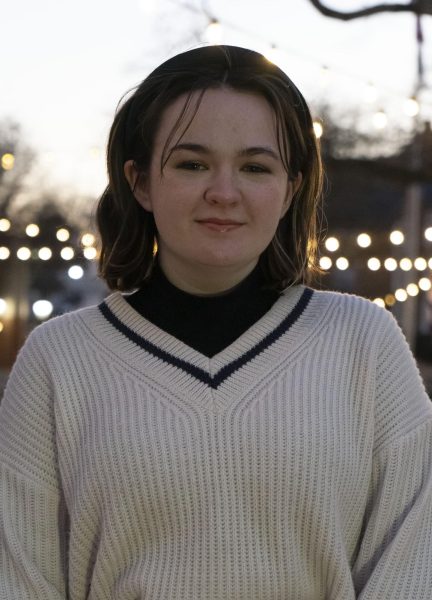
![Caleb Crumpton [COURTESY OF UNA SGA]](https://theflorala.com/wp-content/uploads/2024/07/caleb-crumpton-courtesy-of-SGA-425x600.jpg)

